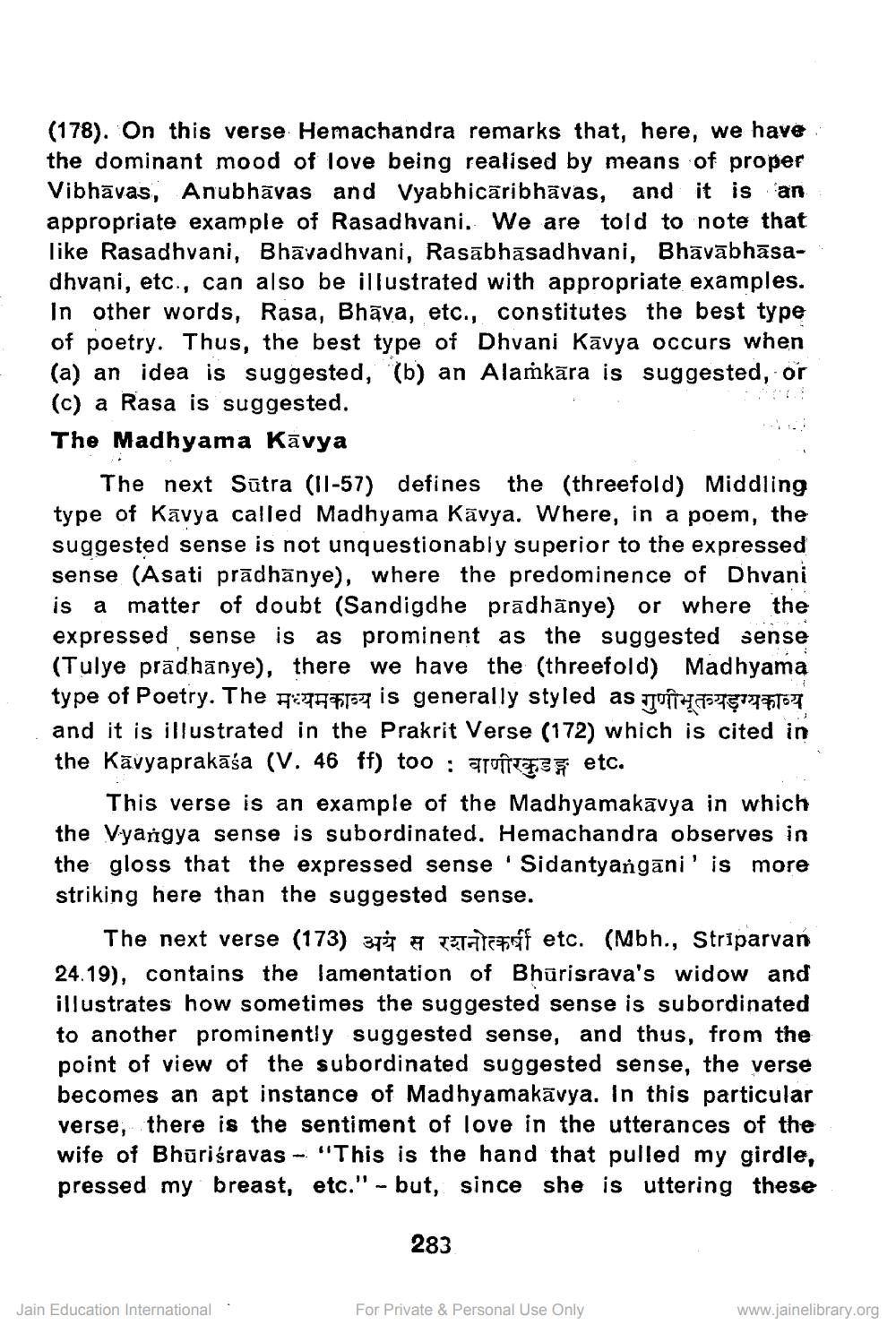________________
(178). On this verse. Hemachandra remarks that, here, we have the dominant mood of love being realised by means of proper Vibhāvas, Anubhāvas and Vyabhicäribhāvas, and it is an appropriate example of Rasadhvani. We are told to note that like Rasadhvani, Bhāvadhvani, Rasābhāsadhvani, Bhāvābhāsadhvani, etc., can also be illustrated with appropriate examples. In other words, Rasa, Bhāva, etc., constitutes the best type of poetry. Thus, the best type of Dhvani Kavya occurs when (a) an idea is suggested, (b) an Alamkāra is suggested, or (c) a Rasa is suggested. The Madhyama Kāvya
The next Sūtra (11-57) defines the (threefold) Middling type of Kavya called Madhyama Kavya. Where, in a poem, the suggested sense is not unquestionably superior to the expressed sense (Asati prādhānye), where the predominence of Dhvani is a matter of doubt (Sandigdhe pradhānye) or where the expressed sense is as prominent as the suggested sense (Tulye prādhānye), there we have the (threefold) Madhyama type of Poetry. The मध्यमकाव्य is generally styled as गुणीभूतव्यङग्यकाव्य and it is illustrated in the Prakrit Verse (172) which is cited in the Kāvyaprakāśa (V. 46 ff) too : arturs etc.
This verse is an example of the Madhyamakāvya in which the Vyangya sense is subordinated. Hemachandra observes in the gloss that the expressed sense 'Sidantyangāni' is more striking here than the suggested sense.
The next verse (173) 374 paarif etc. (Mbh., Striparvan 24.19), contains the lamentation of Bhūrisrava's widow and illustrates how sometimes the suggested sense is subordinated to another prominently suggested sense, and thus, from the point of view of the subordinated suggested sense, the verse becomes an apt instance of Madhyamakāvya. In this particular verse, there is the sentiment of love in the utterances of the wife of Bhūriśravas -. "This is the hand that pulled my girdle, pressed my breast, etc." - but, since she is uttering these
283
Jain Education International
For Private & Personal Use Only
www.jainelibrary.org




